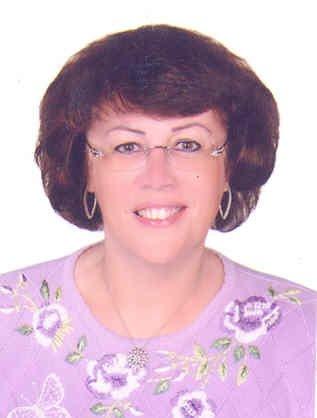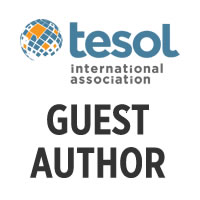TESOL Governance Review: Preliminary Findings
As reported in the March 2013 and August 2013 issues of TESOL Connections, a task force has been appointed by the TESOL International Association Board of Directors to evaluate the current governance of TESOL International Association and—if warranted—propose changes to improve its efficiency and efficacy at meeting the needs of the membership. Following an extensive period of research and study on association governance, the task force began collecting and analyzing data about TESOL International Association’s own governance system.
Data Collection and Analysis
To conduct their research, the Governance Review Task Force (GRTF) focused on three specific tasks.
Task 1: Review of Governance Documents
The first task was a review of all the relevant documents that relate to the governance of the association. Primarily, this focused on the Standing Rules of TESOL International Association, which serve as a form of internal legislation. The Standing Rules cover many of the main components of the association, such as committees, interest sections, councils, resolutions, and affiliates, and only the Board of Directors has the authority to change them. In addition, the GRTF reviewed reports from committees, councils, and interest sections; governing rules for the interest sections; and other documents such as handbooks and procedures. All of the documentation was reviewed through the lens of the Framework of Governance Principles that was developed by the GRTF.
Task 2: Input From TESOL Leadership
The second task focused on collecting input from current leaders about their experience within the association. This was done through a survey sent to committees, interest section leaders, and members of the Interest Section Leadership Council and Affiliate Leadership Council. The survey asked leaders to respond to a series of statements about their experience with the governance of the association, using a Likert Scale. Here is an example of those statements:
- I understand the decision-making process within TESOL International Association.
- The work I do on behalf of TESOL International Association makes the best possible use of my knowledge, skills, and experience.
- I understand how knowledge and information are cultivated and disseminated throughout TESOL International Association, and the role my committee plays in that process.
Depending upon the leadership position held, some participants were also asked a series of short-answer questions along the same themes. All participants were given the opportunity to provide additional comments on the survey.
Task 3: Input From TESOL Board and Staff
The third task focused on the experience of the Board of Directors and the staff of TESOL International Association. For this, the GRTF held several focus groups around the October 2013 meeting of the Board of Directors in Alexandria, VA USA. As with the document review and the surveys, the Framework of Governance Principles was the guiding framework for the questions and discussions. Led by members of the GRTF, the focus group discussions were recorded and analyzed for their responses.
Emerging Findings
Based on the analysis to date, the following findings are emerging from the data that have been collected:
Emphasis on Structure and Process Over Strategy
The document review revealed that the present governance within the association is focused on structure and process without a clear strategy. There is a great deal of information about the duties, responsibilities, and requirements of member groups and components (i.e. interest sections and committees) but very little information—if any—as to their strategic purpose. In other words, the Standing Rules go to great lengths detailing how to submit reports, how many meetings are to be held, and so forth, but provide little information as to how member groups and components contribute meaningfully to advancing the strategic direction of the association, outside of having sessions at the annual convention. Moreover, the various elements of the association appear to have been created in an ad hoc manner; there is little information on how the various member groups and components are to work together as a system.
Great Need for Clarity
Leaders responded that they in large part had a sense of where in the governance system their member groups or components fit, but did not really understand the system as a whole. Leaders also indicated they needed more clarity in terms of their responsibilities, their authority, and their role in the strategic direction of the association. Moreover, leaders in large part did not have a clear understanding of the decision-making process within the association, and their role in that process.
Inefficiencies in the System
Much of the information collected indicated significant inefficiencies in the governance system. Specifically, many leaders pointed to a lack of continuity in TESOL work. As leadership changes, the work and direction of a committee or member group can change direction drastically, with little continuity from one year to the next. In addition, there is no clear mechanism for the cultivation and distribution of knowledge and information between components and member groups. Most often it is driven by personnel rather than process. Lastly, while there are some small-scale instances of training for specific roles, there is an overall lack of training and orientation within the association for leaders and volunteers.
Desire for Meaningful Contributions, Acknowledgement, & Accountability
One clear finding was that regardless of their role, leaders have a strong desire to contribute to the work of the association. Many leaders indicated that the work they are asked to do is primarily administrative, and not as meaningful as it could or should be. In addition, leaders expressed a strong desire to be acknowledged for the work they do, and for accountability in both directions. Leaders also expressed a desire to learn more about leadership, have opportunities to exchange information, and to collaborate outside of the annual convention.
In December 2013, the GRTF hosted a webinar for leaders to present these preliminary findings in more detail. A recording of the webinar is available online.
Next Steps
The GRTF is continuing to analyze the data it has collected and will be producing a formal report on the findings by February 2014. After it is published, the GRTF will host a webinar for leaders and other interested members to discuss the findings in more detail, and they will present the findings and provide opportunities for feedback at the 2014 TESOL International Convention in Portland, Oregon, USA.
Additional resources from the GRTF, including previous updates and documentation, is available online.
TESOL Blogs
Interested in writing a blog for TESOL?
Contact
Tomiko Breland with your idea or for submission details.
Check out the latest TESOL Blogs:
|
8 Current Trends in Teaching and Learning EFL/ES, by Deena Boraie
 The TESOL President’s Blog The TESOL President’s Blog
Last month, I had the good fortune of having been invited as a plenary speaker in MexTESOL’s 40th anniversary convention, held in lovely Querétaro. I had a wonderful time, and I really felt at home—I discovered that Mexicans have a lot in common with my people (Egyptians). During the convention, I was also asked to give a talk about the current trends in English language teaching and learning in an EFL or ESL context. I was very pleased to do so, and here are the key eight trends that I talked about. These are not necessarily an exhaustive list and most likely there are other trends that I have not mentioned. Read More. |
|
Writing-to-Learn Activities, by Elena Shvidko
 Many of you are probably familiar with writing-to-learn (WTL) activities—“Short, impromptu or otherwise informal writing tasks that help students think through key concepts or ideas presented in a course. Often, these writing tasks are limited to less than five minutes of class…” (Definition from the WAC Clearinghouse). Writing-to-Learn activities can be used in any situations where students could benefit from thinking deeply about what they are doing in class, or why they’re doing it. In today’s blog entry, I synthesize the information that I found about writing-to-learn activities and share the activities’ purposes, how to implement them at different times during class periods, and how they can be used across the skills. Read More. Many of you are probably familiar with writing-to-learn (WTL) activities—“Short, impromptu or otherwise informal writing tasks that help students think through key concepts or ideas presented in a course. Often, these writing tasks are limited to less than five minutes of class…” (Definition from the WAC Clearinghouse). Writing-to-Learn activities can be used in any situations where students could benefit from thinking deeply about what they are doing in class, or why they’re doing it. In today’s blog entry, I synthesize the information that I found about writing-to-learn activities and share the activities’ purposes, how to implement them at different times during class periods, and how they can be used across the skills. Read More.
|
|
Eavesdropping on the Present Perfect, by Alexandra Lowe
 Perhaps no frequently used tense in the English language is as bedeviling as the present perfect tense. Many advanced ESL students still struggle to use it correctly. And plenty of instructors—myself included—have struggled to teach it well. Perhaps no frequently used tense in the English language is as bedeviling as the present perfect tense. Many advanced ESL students still struggle to use it correctly. And plenty of instructors—myself included—have struggled to teach it well.
This fall, after several semesters of doing valiant battle with this tense, I decided to adopt a new approach. Instead of dutifully marching my students through our textbook’s chapters on using the present perfect with “since” or “for” or “already, yet, and still,” I decided to lay the groundwork for our work on the present perfect by asking them to listen to how people at work, on the street, in the movies, and on the Internet actually used this tense. Their assignment was to “eavesdrop” on the English language as it was being spoken around them outside of class, to listen for the use of the present perfect, to write down what they heard, and to bring the sentences they overhead to class. Read More. |
|
Best Language Learning Games: Part 3 of 5, by Marc Anderson
 This is the last article in a series of recommended language games for ELLs. As I mentioned in the first article, I was cleaning out my files and moving classrooms for the beginning of a new school year recently, when I stumbled upon this box of homemade language games. I was reminded of how much language progress the students made with these games and how much fun they had, too. I thought you might like to hear my choices of the Best Learning Games. This week’s game is I Have, You Have (Learning English) which is based on a popular game that provides reinforcement with various academic skills through an interactive group activity. Read More. This is the last article in a series of recommended language games for ELLs. As I mentioned in the first article, I was cleaning out my files and moving classrooms for the beginning of a new school year recently, when I stumbled upon this box of homemade language games. I was reminded of how much language progress the students made with these games and how much fun they had, too. I thought you might like to hear my choices of the Best Learning Games. This week’s game is I Have, You Have (Learning English) which is based on a popular game that provides reinforcement with various academic skills through an interactive group activity. Read More.
|